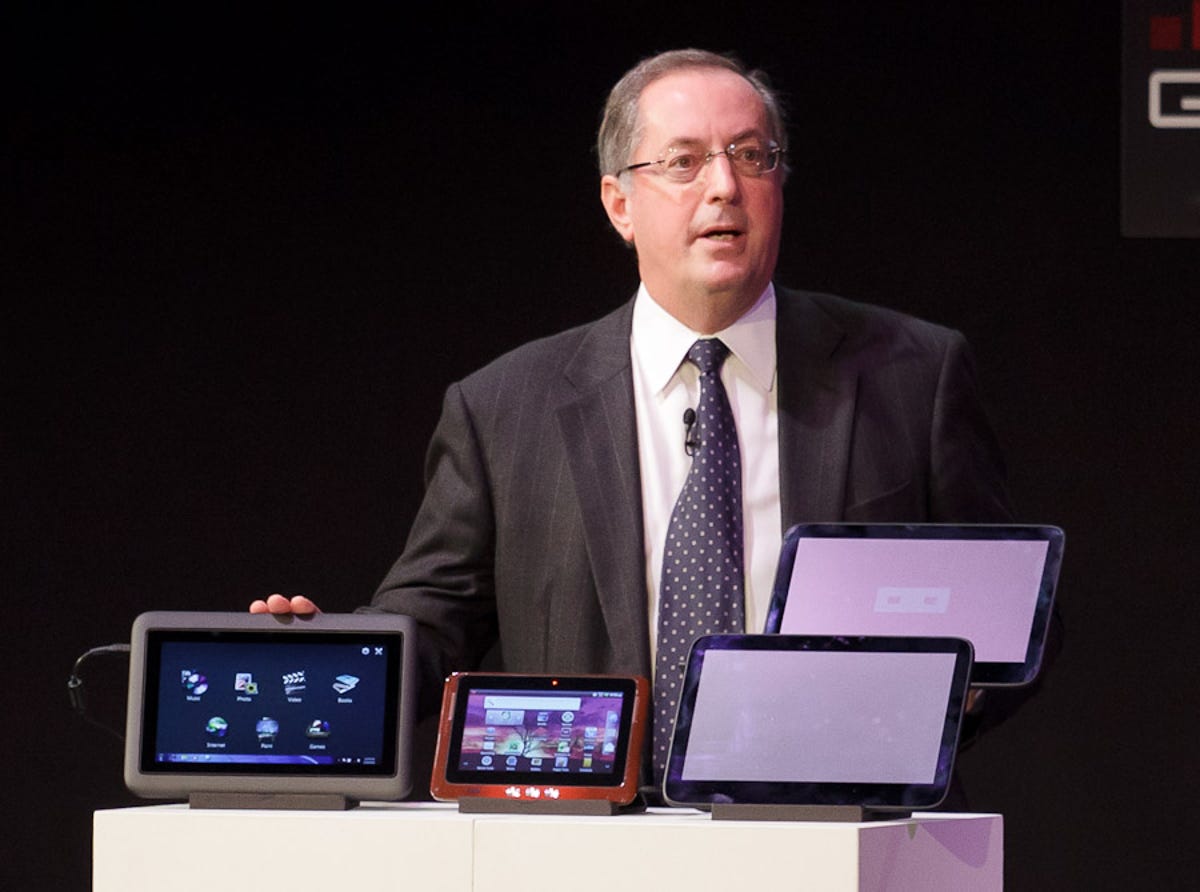BARCELONA, Spain–In a trade show dominated by phones and PCs using ARM-based processors, Intel Chief Executive took the stage to tout his own x86 chips.
Intel, of course, grew to power on the basis of its x86 chip family, including Pentium, Xeon, and now Core and Atom processors. Today’s smartphones, though, use ARM-based chips from companies such as Qualcomm, Texas Instruments, and perhaps most concerning for Intel, now Nvidia as well. Those products are hogging the spotlight at the Mobile World Congress show here.
So when will Intel-powered smartphones arrive?
“This year,” Otellini said, though he was reserved about further details. “We can’t preannounce our customers. I think it’s going to be pretty exciting.”
Mobile devices have been a painful experience for Intel for years, but it’s clear the technology remains a priority. Microsoft, like Intel a PC-generation company that’s also been a mobile-market laggard, inked a high-profile partnership with Nokia to try to accelerate its push to relevance. Intel clearly understands the urgency, too.
“We see an emerging class of ultramobile devices,” Otellini said. There was a “seminal event in the fourth quarter. Smartphone shipments passed PC shipments for the first time.”
And yet tablets and smartphones will live alongside PCs. Otellini defended the PC business’ 17 percent growth last year, and said customers won’t settle on just one machine.
“No single device wins,” Otellini said. “We don’t see an environment where one machines satisfies all needs. At least for the next four to five years, we’re likely to see multiple devices and multiple form factors simply because people want to do multiple things.”
In his own speech, though, Softbank CEO Masayoshi Son said that PCs can be replaced by tablets. He made the switch completely a year ago, and said as well that every one of Softbank’s employees gets an iPhone and iPad.
“I’m using this tablet every day, everywhere I go–even in the bathroom,” Son said, holding up an unidentified device. “In the last 12 months, I’ve never touched the PC.”


Stephen Shankland/CNET
Asked during a panel discussion after his remarks where he’d invest with the intent for returns over the next five to 10 years, Otellini had a quick response: “Batteries.”
“We can’t keep using lithium ion,” Otellini said, referring to the standard battery format. “It’ll be silicon-based, higher-capacity, longer-life. Whoever invents that is going to make a fortune.”
Intel has been at the center of a PC ecosystem with companies offering operating systems, processors, and computers. This horizontal integration is not as common in the mobile phone market–perhaps most notably today with Apple’s iPhone, whose vertical integration extends all the way through the app store.


Stephen Shankland/CNET
Otellini sees an end to vertically integrated, proprietary technology, though.
“Computing technology is something that always starts out closed,” he said, pointing to the bygone ages when mainframes and later minicomputers ruled the industry. “Over time, people evolve on those. You create standards. You have millions of people developing on them. What you see is a very normal process of development and diffusion of technology.”
“In general, to harness all the abilities of all the engineers in the world and all the developers in the world, open wins,” Otellini said.
One area where Intel evidently hopes to get an edge in the mobile world is security. Power-efficient processors and network connectivity are essential, but they’re not enough.
“I contend security is going to be as important a feature set as all these other features,” Otellini said.
Another feature he likes is WiDi, short for Intel Wireless Display, which lets people beam video from a PC to a TV. It’s not just for PCs, though: “We’ll put this technology next year into tablets and into phones,” Otellini said.
Updated 2:31 a.m. PT and 3:44 a.m. PT with further comments from Otellini and a comment from Son.



